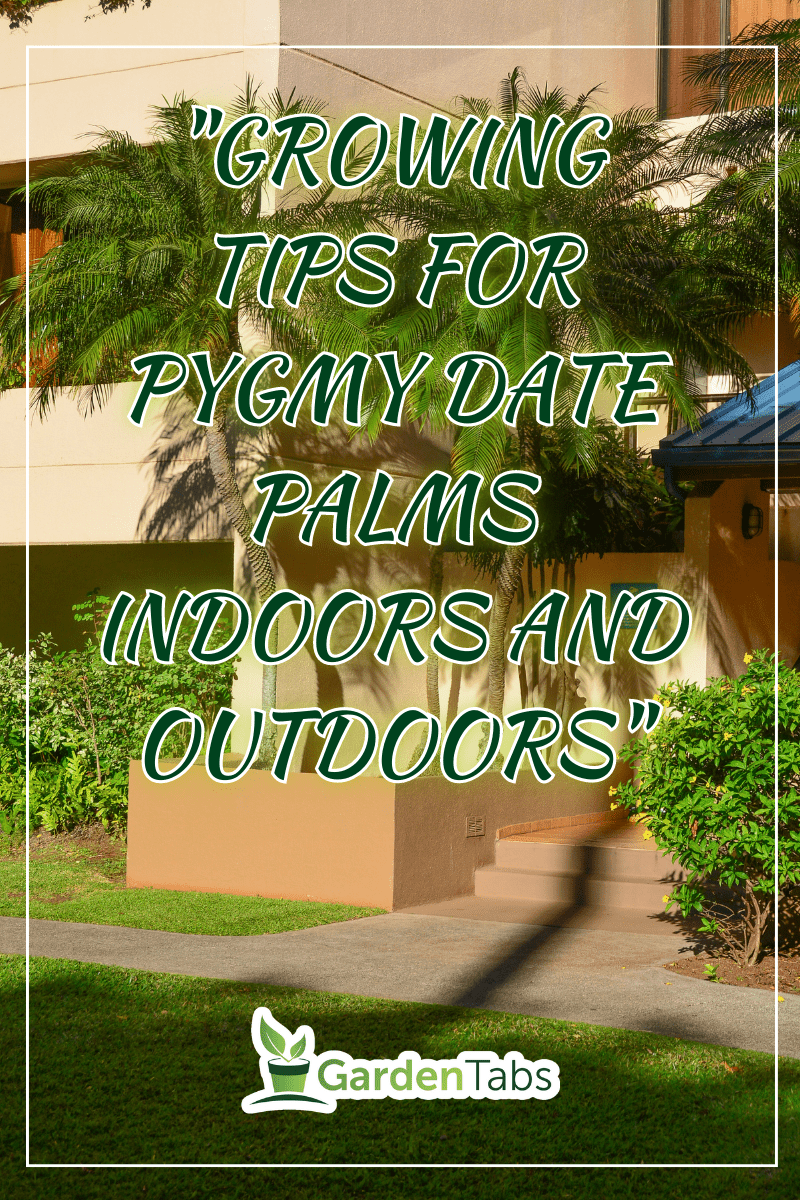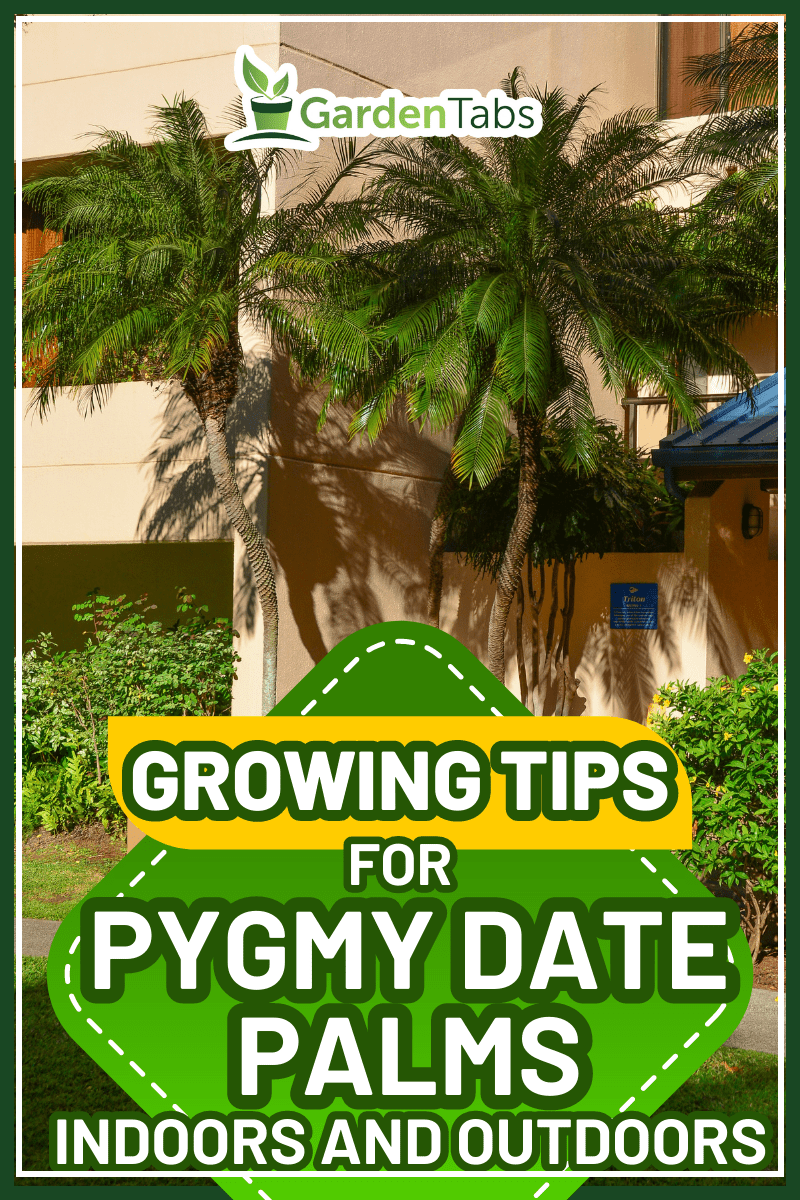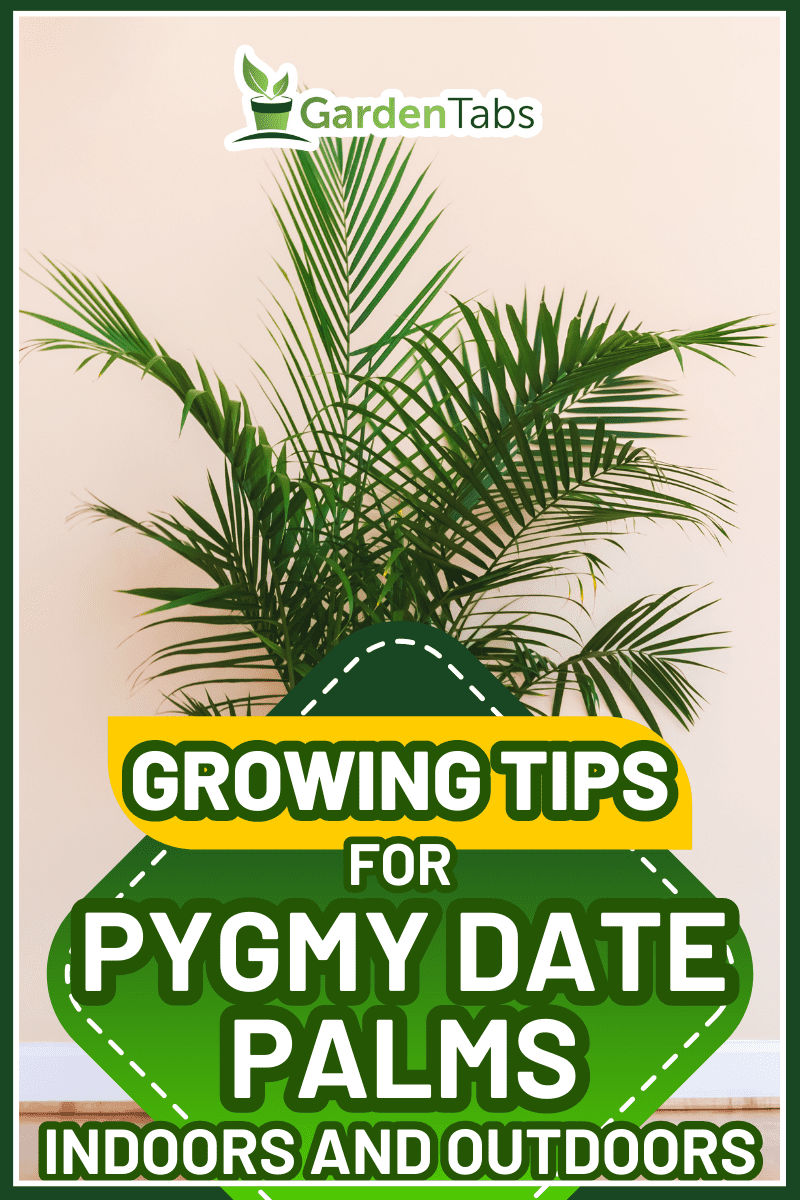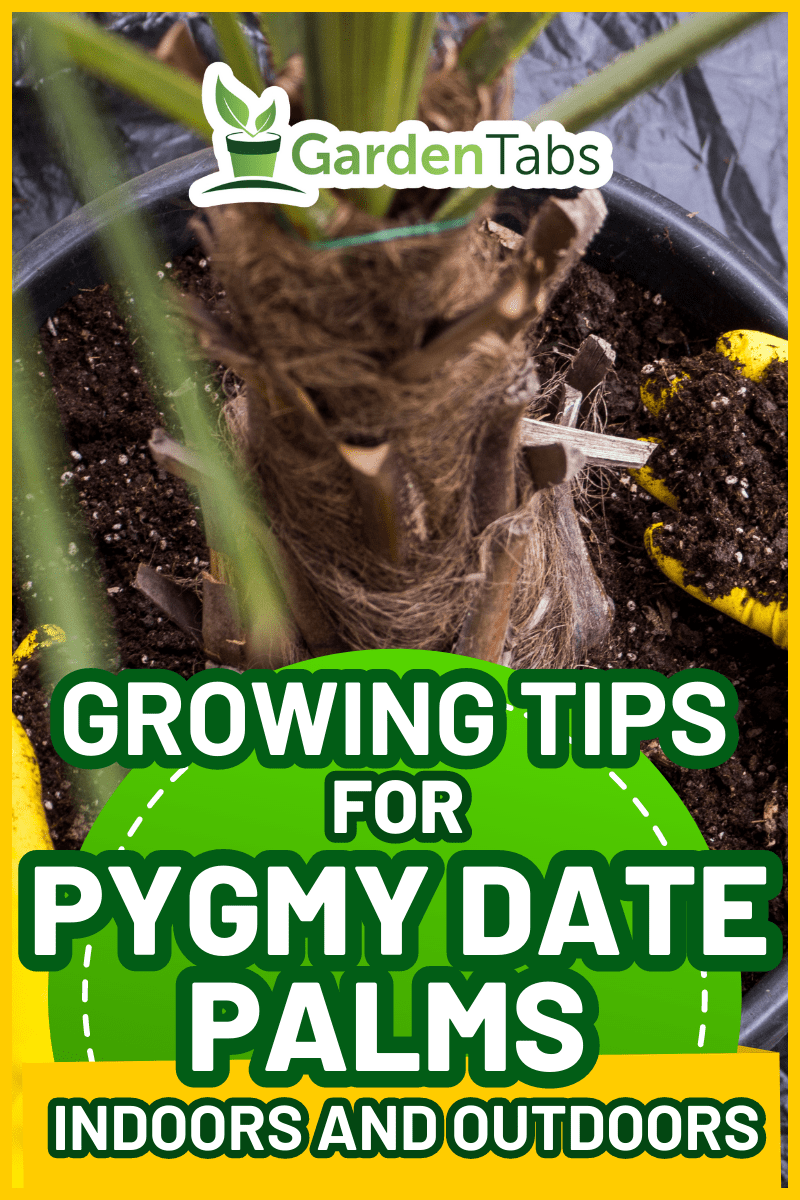The pygmy date palm is a popular choice for both indoor and outdoor gardening enthusiasts.
This palm is easy to care for and can thrive in a variety of environments, making it a great choice for novice gardeners.
Pygmy date palms have different needs, depending on if you are growing them indoors or outdoors. But with the right care and attention, the trees can add a touch of tropical elegance to any space.

What Are Pygmy Date Palms?
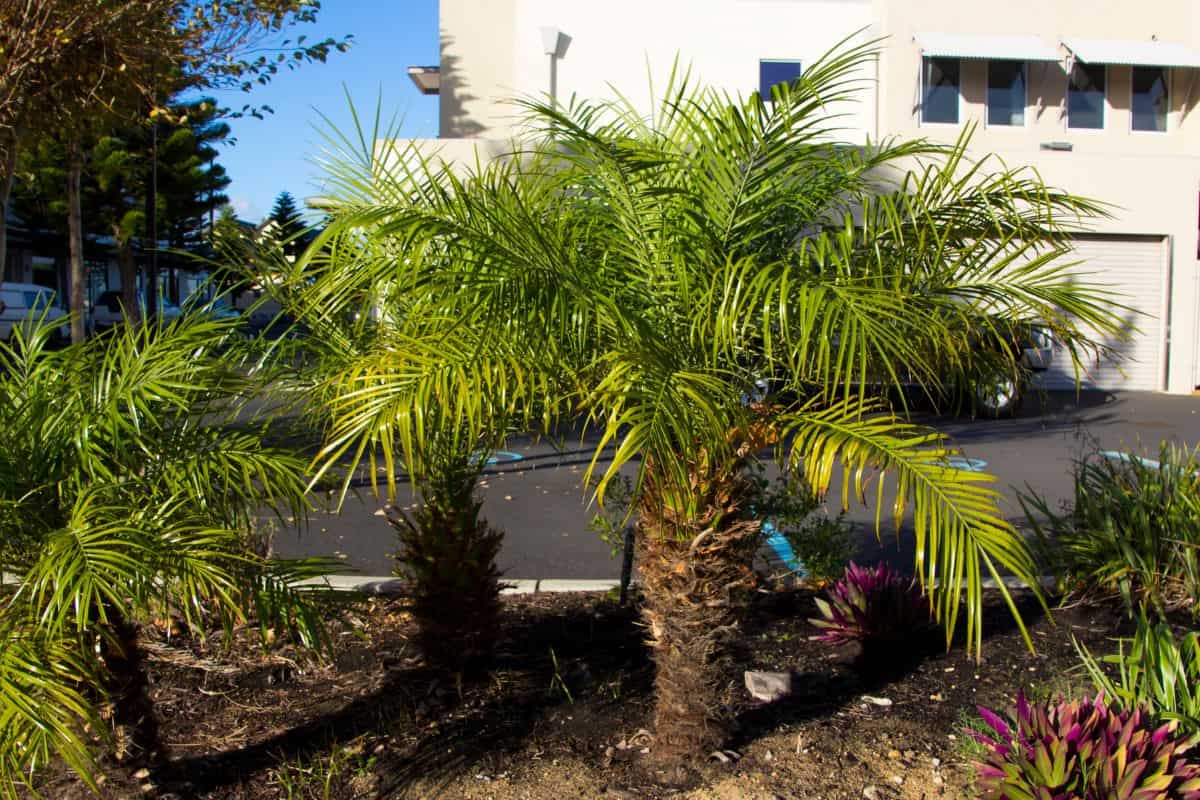
Pygmy date palms, also known as Phoenix roebelenii, are small, slow-growing palms native to Southeast Asia.
These palms are popular among gardeners and landscapers. Their slender trunks are topped with a crown of feathery, dark green fronds that can reach up to six feet in length.
Pygmy date palms can be grown indoors and outdoors. They are often used as a decorative accent in landscapes, as well as in container gardens and indoor spaces.
Choosing the Right Location for Your Pygmy Date Palm
When it comes to growing a pygmy date palm, choosing the right location is crucial. Whether you plan to grow it indoors or outdoors, there are a few things to consider to ensure your palm thrives.
Indoor Locations

Pygmy date palms can be grown indoors as container plants, making them a great option for those who live in cooler climates.
When choosing a location for your indoor palm, it's important to consider the following:
- Lighting: The trees require bright, indirect light. Make sure to choose a location near a window that receives plenty of sunlight.
- Temperature: The trees prefer a temperature range between 70-80°F during the day and 60-70°F at night. Keep the palm away from any cold drafts or heat sources.
- Humidity: Pygmy date palms thrive in humid environments, so consider using a humidifier or placing a tray of water near the plant to increase humidity levels.
- Soil: Use well-draining soil and make sure the container has drainage holes to prevent water from accumulating in the soil.
Outdoor Locations
![Phoenix roebelenii, with common names of dwarf date palm,[1] pygmy date palm, miniature date palm or robellini palm, is a species of date palm native to southeastern Asia](https://gardentabs.com/wp-content/uploads/2023/04/Phoenix-roebelenii-with-common-names-of-dwarf-date-palm1-pygmy-date-palm-miniature-date-palm-or-robellini-palm-is-a-species-of-date-palm-native-to-southeastern-Asia.jpg)
The palms can be grown outdoors in USDA zones 10 and 11, where temperatures don't usually go below 30°F. When choosing a location for your outdoor palm, it's important to consider the following:
- Lighting: The palms prefer partial shade to full sun. It's best to put them in a location that receives some shade during the hottest part of the day.
- Soil: The trees prefer well-draining soil and are tolerant of salt, making them a great option for coastal gardens.
- Water: The trees are drought tolerant once established, but young palms will require regular watering until they become established.
- Temperature: The trees prefer a warm, tropical climate and can be damaged by frost or freezing temperatures.
Soil Requirements
The trees need well-draining soil that is rich in nutrients.
Sandy soil is ideal, as it allows for proper drainage and prevents water from accumulating around the roots.
It is also important to ensure that the soil is not too alkaline because this can lead to nutrient deficiencies.
When potting your palm, choose a potting mix that is specifically designed for palms.
Check out this palm tree potting mix on Amazon.
These mixes typically contain a blend of peat moss, perlite, and vermiculite, which provide the necessary drainage and nutrients for healthy growth.
If the soil in your area is not ideal, you can amend it by adding sand or peat moss to improve drainage and nutrient content.
Fertilization
In addition to proper soil, the trees require regular fertilization to ensure healthy growth.
Fertilizer should be applied every two to three months during the growing season (spring and summer).
When choosing a fertilizer, choose one that is specifically formulated for palms.
These fertilizers typically contain a balanced blend of nitrogen, phosphorus, and potassium, as well as micronutrients such as iron and magnesium.
Check out this palm tree fertilizer on Amazon.
When applying fertilizer, it is important to follow the manufacturer's instructions carefully.
Over-fertilization can lead to nutrient burn and other problems, so remember to apply the correct amount at the correct time.
Watering and Humidity
Proper watering and humidity are key factors in maintaining a healthy palm. Overwatering can cause root rot, and underwatering can cause the fronds to turn brown and dry out.
Watering Frequency
As a general rule, it is better to underwater than overwater. The top inch of soil should be dry before watering again.
For indoor plants, it is recommended to water once a week during the growing season. Reduce watering to once every two weeks during the dormant season.
Outdoor plants may need to be watered more frequently during hot, dry weather.
Humidity Requirements
Pygmy date palms prefer a humid environment.
If the air is too dry, the tips of the fronds may turn brown and dry out. To increase humidity, mist the leaves regularly or place a humidifier near the plant.
Another way to increase humidity is to place a tray of water near the plant. As the water evaporates, it will create a humid microclimate around the plant.
Pygmy date palms can be sensitive to fluoride and other chemicals found in tap water. To avoid damage to the plant, it is recommended to use distilled or filtered water for watering.
Pruning and Maintenance
Proper pruning and maintenance are essential for the health and longevity of your tree.
Pruning Tips
Regular pruning helps to remove any diseased or damaged fronds that can spread to the rest of the plant.
You should prune your plant at least once a year, preferably in the spring or early summer when it is actively growing.
Check out these pruning shears on Amazon.
When pruning, use sharp, clean shears to prevent any damage to the plant.
Start by removing any dead, yellow, or brown fronds at the base of the plant. Then trim back any healthy fronds that are touching or crossing over each other to promote better air circulation and light penetration.
Be careful not to over-prune your plant, as this can weaken it and make it more susceptible to disease and pests.
Only remove up to one-third of the fronds at a time and avoid cutting into the trunk or the crown shaft.
Common Problems and Solutions
Despite your best efforts, your tree may encounter some problems. Here are some solutions to help you address them:
| Problem | Solution |
|---|---|
| Brown tips on fronds | Check the soil moisture and adjust your watering schedule as needed. Make sure the plant is not in a drafty or dry location. |
| Yellowing or drooping fronds | Check the soil moisture and adjust your watering schedule as needed. Make sure the plant is not in direct sunlight or in a location with too much heat or cold. |
| Pests such as spider mites or mealybugs | Remove any affected fronds and treat the plant with a natural or chemical insecticide. Follow the instructions carefully and avoid overuse to prevent damage. |
Wrapping Up
By following the simple tips in this post and addressing problems promptly, your pygmy date palm will thrive.
Growing the tree can be easy, even if you are just starting out with your garden. If you care for your palm properly, you'll get that tropical feel in your home all year round.
Read more about palms here:


